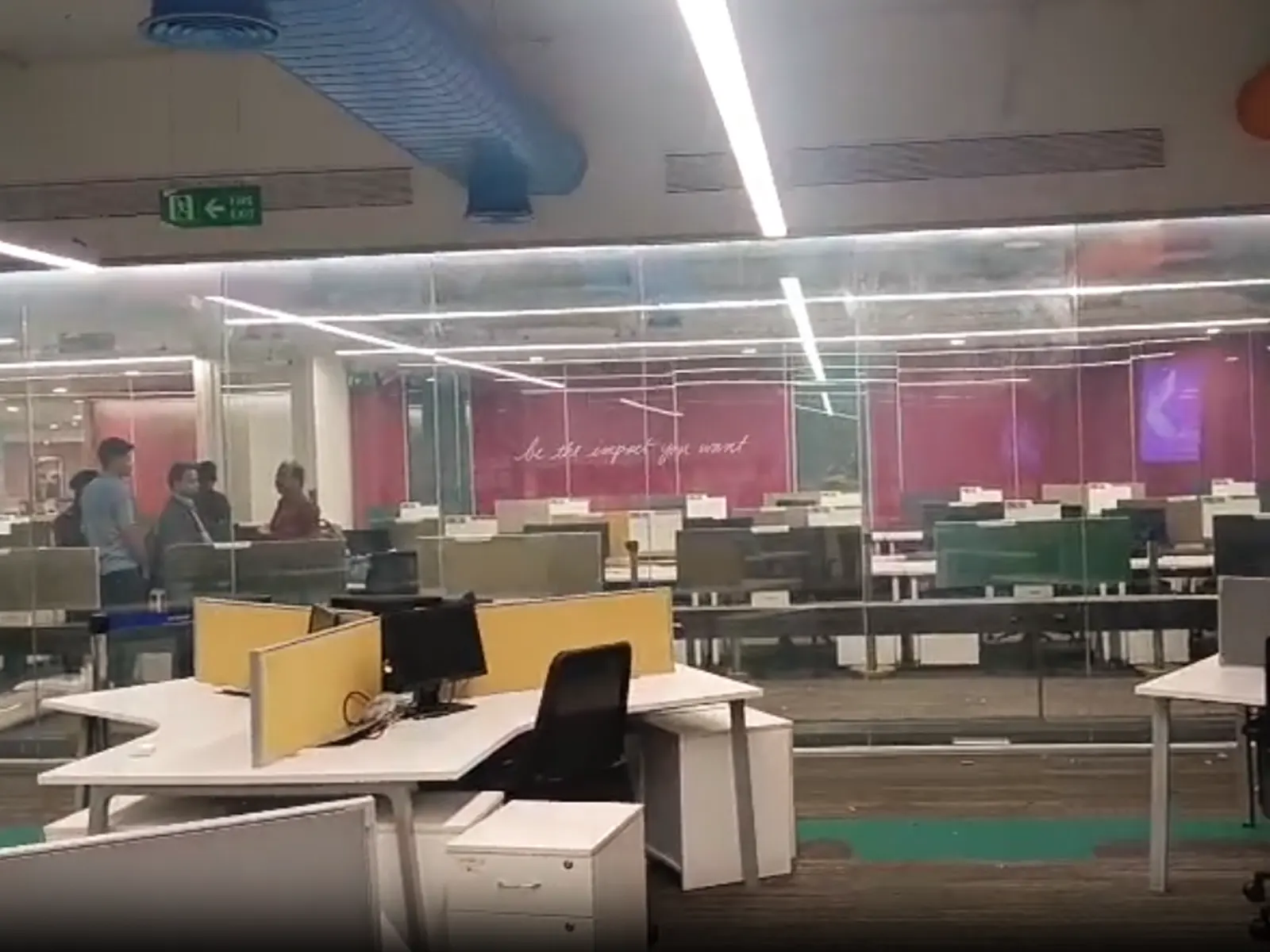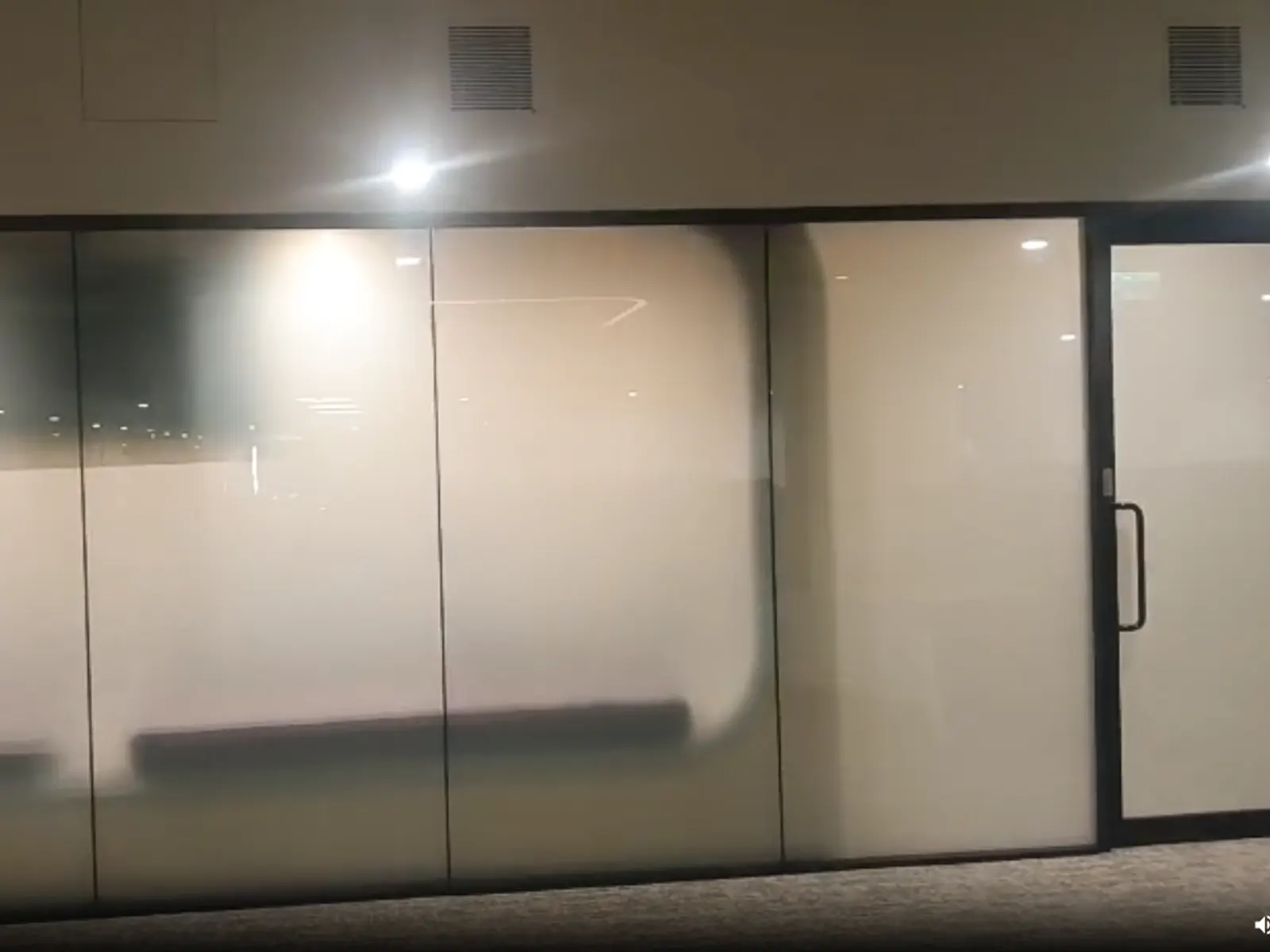
With the rise of smart buildings, sleek offices, and luxury residences in this modern era, controlling transparency and privacy with a switch is no longer a pipedream, it's a reality. Introducing switchable film: an ultra-thin, electronically activated film that turns plain glass surfaces into dynamic light, privacy, and design partitions. With its increased popularity, especially in corporate boardrooms, healthcare facilities, boutique hotels and luxury residences, this solution is ushering in the arrival of truly adaptive interiors.
Here in this blog we will be talking about all that you want to know about switchable film, what is it, how does it work, the different types available, key technical specifications, its many benefits, and its wide applications. We’ll also cover how installation works and how to maintain your investment so it keeps working seamlessly. Whether you’re an architect, interior designer, facility manager or homeowner, by the end you’ll be equipped with the knowledge to evaluate whether switchable film is the right smart-glass upgrade for your space.
What Is Switchable Film?
Switchable film also known as smart film, PDLC film (Polymer Dispersed Liquid Crystal film) or privacy film is a clear or translucent thin film coated or laminated on the inside of glass that allows the glass to become frosted (opaque) when powered. The key move: when electricity is flowing, the liquid crystals align so that you are able to see through the glass; when electricity is turned off, they disperse the light and the glass frosts up and obscures the view.
It's reasonable to differentiate switchable film from switchable glass. Switchable glass typically refers to a laminated or insulated glass unit that is built with the PDLC layer sandwiched between two panes of glass. Switchable film can be retrofitted into existing glass surfaces or used in new glazing applications. It offers cost benefits and flexibility with simpler upgrading of existing partitions or windows without replacing the entire glass.
How Does Switchable Film Work?
Switchable film relies on PDLC technology, Polymer Dispersed Liquid Crystal, in which liquid crystal molecules are spread throughout a polymer matrix between transparent conductive coatings. The application of a low alternating current (AC) voltage causes the liquid crystals to align in one direction, rendering the film transparent and permeable for light. When power is disconnected (or switched "off"), the crystals re-orient randomly, scatters light, and makes the film opaque or frosted.
In practice:
1. ON (Powered): Film is clear; one can look through the glass.

2. OFF (Unpowered): Film is frosted or opaque; privacy mode activated.

3. Control Options: The power source is usually a low-voltage transformer (usually 48-60 V AC for retrofit film), and control can be by wall switch, remote, smartphone/app, voice control or sensor (motion/light).
By merely turning power to the film, the condition of opacity switches in milliseconds, allowing instant control of view and privacy.
Types of Switchable Films
In contemplating switchable film, there are various types and forms to consider depending on your installation situation:
- Self-stick switchable film (retrofit): This is film which can be directly applied to existing glass surfaces, from a peel-and-stick adhesive backing. Ideal for replacing existing partitions without having to replace glass.
- Non-adhesive film (lamination/new-glass installation): The film is sandwiched between glass panes when laminated, offering greater durability, sealed environment and longer lifespan. Often installed in new construction or custom glazing panels.
- Projection-compatible film: Some switchable films are designed to act as rear-projection screens in the opaque (frosted) state. This allows for multifunctional use, privacy one moment, presentation screen the next.
- Coloured or tinted switchable films: As well as the standard clear/opaque transition, there are decorative versions with tinted or coloured finishes for aesthetic or brand-specific design treatments.
Key Features and Technical Specifications
When describing switchable film, these are the essential features and technical details to watch for:
- Voltage operation: Typical retrofit film works around 42-70 V AC.
- Switching time: The film usually switches extremely fast, usually under 10 milliseconds on some models.
- Light transmission (ON/off positions): In ON position, high light transmission is ideal (usually 85-95%), and in OFF position, the film darkens obscuring.
- UV & IR blocking: Some films also provide UV protection (up to ~99.5%) and IR/heat control, which aid in energy efficiency.
- Durability and lifespan: Film durability depends on quality, sealing and exposure. Laminated films between glass will have longer lifespan compared to surface-applied ones.
When you compare these specifications, you can ensure you are selecting a switchable film that meets performance specifications for clarity, speed, energy savings and long-term use.
Benefits of Switchable Film
1. On-Demand Privacy
Switchable film makes areas switch from transparent to opaque at the moment, where meeting rooms become private executive offices, hospitals establish confidential patient areas, or residential rooms turn open glass partitions into private sanctuaries.
2. Energy Efficiency
Switchable films of high performance keep out heat and destructive UV radiation, decreasing air-conditioning reliance and minimizing solar gain. In the long term, this translates to energy cost savings and improved occupant comfort.
3. Aesthetic Appeal
Minimalist and clean, switchable film does away with the need for blinds, shutters or curtains, with clean lines and modern flair. It offers architects and designers an effective tool to create high-energy and high-design interiors.
4. Multi-functional Use
Aside from privacy, the film can also serve as a projection screen, partition wall, or window treatment. That multi-functionality offers return on investment and space design flexibility.
5. Easy Installation and Retrofitting
Specifically for self-adhesive retrofit smart films, existing glass can be updated with no disruption needed, no full glass replacement is needed. That makes it ideal for office refurbishments, hospitality refurbs and phased upgrade.
Switchable Film Applications
Commercial Spaces
In corporate office buildings, showrooms and retail fronts, switchable film is ideal for presentation rooms, glass partitions, and display windows. It can instantly give privacy to client meetings or presentations but open up the space and let in light when transparency is desired.
Residential Spaces
At home, switchable film is used for bathroom enclosures, balcony windows, skylights, glass dividers and even home theatre screens. It enables homeowners to enjoy natural light and view, and control privacy where required.
Healthcare and Hospitality
Hospital, clinic and hotel rooms are greatly benefited by curtain-free and blind-free privacy glass. Patient room glass partitions, luxury hotel bathrooms, or spa rooms make use of this technology.
Automotive and Transportation
Switchable film (or laminated switchable glass) is used on luxury cars, trains and planes to their sunroofs, windows and partitions, offering privacy, elegance and state-of-the-art functionality to transportation environments.
Installation Procedure of Switchable Film
Following is an overview step-by-step of how switchable film (especially self-adhesive retrofit) is installed:
- Measure and clean glass surface properly to avoid any dust, debris or grease that might hamper the adhesion.
- Place the film over the glass with adhesive side facing the glass surface; place properly, remove air bubbles and hold firmly with proper edge seals.
- Connect electrical wires from the film to the control system and power transformer; maintain proper low-voltage supply and correct wiring practices.
- Check ON/OFF operation: switch the system on, test for transparency, then switch off and verify that it goes opaque. Check response time, evenness, and appearance.
Fitting by professionals is strongly recommended for precision, smooth finishes and dependability over the long term. Personal trimming, cut-outs, shapes or sensor control built-in can also require professional handling.
Hints on Maintenance and Care
To maintain your switchable film system smoothly:
- Clean with a soft microfiber cloth and mild, non-abrasive cleaning chemicals only. Do not use direct spray on the glass; spray on cloth and wipe.
- Avoid exposure of the film to electrical instability, high-voltage surges and moisture penetration, the causes of edge contact degradation or PDLC layer degradation.
- Routine inspect connectors, transformers, wiring and control modules for signs of wear or damage.
- Leave the film in the off (opaque) position during cleaning windows to reduce system stress and avoid accidental electrical activation.
- For retro-fit film installations, check edge sealing and adhesive integrity, especially in high-moisture or external environments where delamination may occur.
Switchable Film vs Switchable Glass
| Feature | Switchable Film | Switchable Glass |
|---|---|---|
| Installation | Retrofittable onto existing glass | Requires new glass unit or full glass replacement |
| Cost | More affordable | Higher cost (glass manufacturing + lamination) |
| Application | Flexible - existing windows/partitions | More permanent, built-into glazing system |
| Maintenance | Easier - film surface and adhesive issues | More complex - sealed glass units, full system |
Thus, if you’re upgrading an existing interior and budget is a key consideration, switchable film is often the more practical choice. For high-end new builds, architectural façades or where maximum durability is required, switchable glass may be preferred.
Conclusion
In summary, switchable film offers a compelling solution for modern interiors, delivering flexibility, instant privacy control, energy savings and aesthetic sophistication. Whether you’re managing a corporate office, designing a luxury residence or upgrading a hospitality space, the technology opens up new possibilities for how glass is used, not just as a barrier or window, but as an intelligent, dynamic surface.
If you are looking to upgrade your glass surfaces with smart technology, look to collaborate with a professional supplier like Privetek, with high-performance PDLC films, custom solutions and expert installation services. Upgrade your glass with advanced switchable film technology today.

